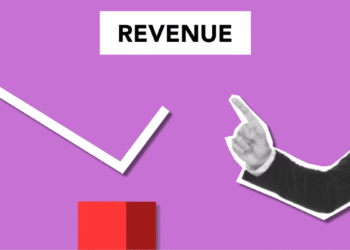Whew. Let me tell you, nothing sours your morning coffee faster than that email from Stripe or PayPal:
“A customer has initiated a chargeback.”
Ugh. It feels personal, even when it’s not. Especially when you know the product got delivered and the customer never once reached out.
The first time it happened to me, I was confused and honestly kind of offended. I thought, Did I mess up? I even double-checked the tracking, the email convo, everything. Nope — they just went behind my back and filed a dispute. Welcome to the world of online business.
My First Chargeback: What Went Down
I had just started selling digital templates on my site — super niche stuff, like social media planners and editable PDFs. They were selling pretty well for something passive, until one customer downloaded the file, waited three days, and then filed a chargeback claiming it was “unauthorized.”
Problem was — I had no clear refund policy visible, no tracking (because duh, it’s digital), and no contract for them to agree to. I had zero documentation to fight back. And I lost the dispute. Just like that — money gone, plus a fee.
That was a wake-up call.
Understand Why Chargebacks Happen
Not every dispute is someone trying to scam you. Some people genuinely don’t recognize the charge on their statement. Others get frustrated and think the only way to get support is to go nuclear with a chargeback. And yeah — sometimes it’s fraud.
Here’s a breakdown of common reasons:
-
Fraudulent purchase or stolen card use
-
Customer dissatisfaction (even if they didn’t reach out)
-
Recurring payment confusion
-
“Item not received” disputes
-
Digital goods with no proof of delivery
Knowing the “why” helps you put up the right defenses before things go sideways.
Tips That Saved My Sanity (and Money)
After a few too many disputes, I cleaned up my process. Here’s what actually helped me reduce chargebacks and win more of them when they came in:
1. Clear Refund & Terms Policy
Put your refund policy everywhere: product pages, checkout, confirmation emails. Make sure it’s fair, clear, and written in plain English. I also added a checkbox at checkout for “I agree to terms” — basic, but effective. This helped immensely, especially after I started managing refund requests more efficiently.
2. Document Everything
Keep receipts, emails, chat logs, tracking numbers — anything that proves the customer got what they paid for. For digital products, I started using software that logs download timestamps and IPs.
3. Use Signature Delivery for Physical Products
Yeah, it costs a bit more. But if you’re shipping high-ticket items? Totally worth it. One signature can be the difference between winning and losing a dispute. This is also one of the best tips I learned when researching payment processing practices for high-ticket items.
4. Communicate First, Always
Most customers don’t actually want to file a chargeback. They just don’t know how else to get help. I started putting “Having an issue? Let us fix it!” in every post-purchase email, along with a direct support contact. That alone slashed disputes by about 30%.
5. Respond Fast
The minute you see that dispute notification, jump on it. Submit everything you’ve got. Time matters — waiting too long means the system might auto-close the case against you.
Digital Products? It Gets Tricky
Selling digital goods like courses, templates, or eBooks? Yeah, it’s harder to prove delivery. Platforms like PayPal often side with the buyer unless you can show download logs, timestamps, or communication proving they accessed the product.
What I do now:
-
Use a delivery system that logs user access
-
Email receipts with product details and delivery confirmation
-
Screenshot any messages where the customer acknowledges they received it
It’s not foolproof, but it helps stack the odds in your favor. If you’re in the digital space, it’s also smart to brush up on how to handle failed transactions and payment errors — because sometimes the chargeback isn’t even their fault.
When You Lose a Dispute? (and You Will Sometimes)
Not gonna lie — losing still stings. Even now, with all my systems in place, I lose the occasional one. It sucks. But I try to treat it like the cost of doing business.
Sometimes, fighting a chargeback isn’t worth the time or emotional energy. Especially if it’s for a $12 product. That said, don’t let losses pile up — too many disputes can flag your account with payment processors and lead to restrictions. Always respond, even if you know you’ll lose.
Final Thoughts: Protect Yourself Early
If you’re in eCommerce, online coaching, or digital product sales, chargebacks are just part of the game. But they don’t have to ruin your day (or your margins).
Build systems, communicate clearly, and track everything you can. And most of all? Don’t take it personally. Half the time, the customer doesn’t even remember filing it.
Just stay professional, stay proactive, and tighten your backend. Trust me — future you will thank you.








